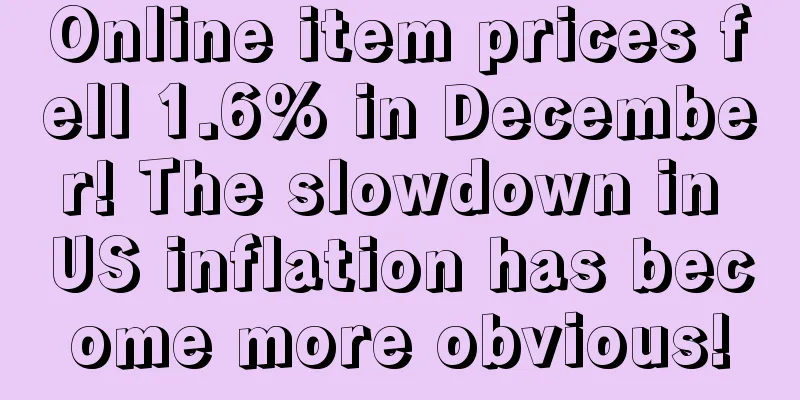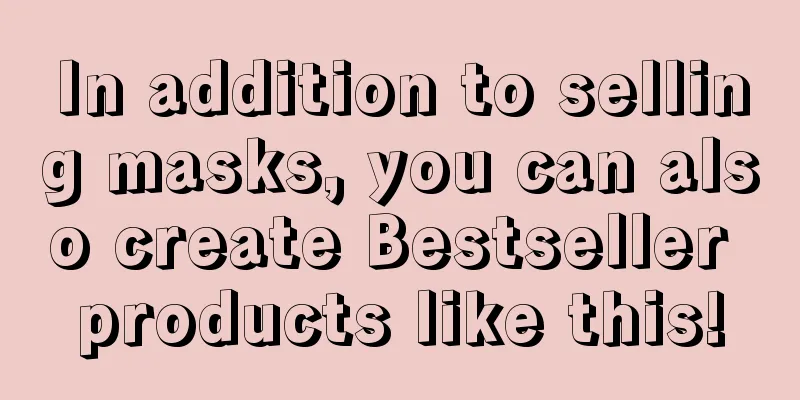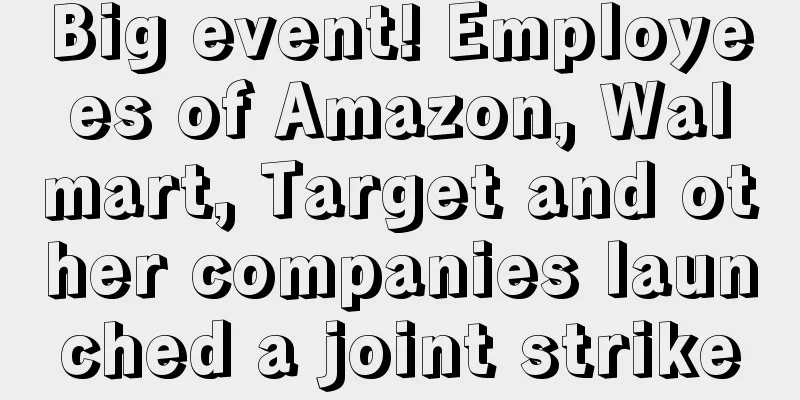Research shows: Amazon's own brands are not that successful, Anker and Orolay show you where to go

|
Amazon’s private label brands aren’t as successful as many say, according to Marketplace Pulse. The e-commerce intelligence firm analyzed more than 23,000 products from more than 400 Amazon brands, which includes Amazon's own private label products and products sold exclusively through Amazon by third-party manufacturers. According to research, Amazon's top 10 most successful private label brands account for 81% of total private label sales, including brands such as AmazonBasics and Pinzon. Amazon added more than 100 private label brands in 2018, but none of the recent private label brands are category leaders. While every new brand launched by Amazon attracts a lot of attention, not every new brand is as influential as the Amazon platform itself. It's a question of quantity vs. quality, with AmazonBasics products accounting for less than 5% of the total private label products, but accounting for more than 57% of sales. Many have suggested that by leveraging internal data, Amazon can launch its brand in many popular categories and capture the majority of sales in that category. But so far, there is no evidence that this is true. Amazon has successfully sold AmazonBasics and Amazon Essentials branded products, but none of these products are clearly data-driven, but rather mimic popular products from other brand sellers. Investment firm SunTrust Robinson Humphrey estimates that Amazon's own product sales reached $7.5 billion in 2018 and will reach $25 billion by 2022. However, these figures include sales of Echo devices and Amazon-owned Whole Foods. Without those, total sales of all private-label products would be less than $1 billion. “Amazon’s private label products account for less than 1% of total sales,” an Amazon spokesperson said. “This is significantly lower than other retailers, where private label product sales account for more than 25% of total sales.” Last year, Amazon's e-commerce retail sales reached $122.9 billion, third-party platform service revenue reached $42.7 billion, AWS cloud hosting revenue reached $25.6 billion, and advertising service revenue reached $10.1 billion, totaling $232.8 billion, up from $177.8 billion in 2017. Marketplace Pulse said that private brands are unlikely to be the reason for Amazon's tens of billions of revenue increases, and private brands will not become an important business for Amazon in the future. Instead, it will fill in underserved niche categories, and exclusive brands will continue to grow. Amazon’s top 10 most successful private label brands include:
The top 10 private label brands account for 81% of all private label product customer reviews, so it is assumed that all Amazon private label brands account for 81% of total sales. However, AmazonBasics alone accounts for 57% of total sales. The top 3 brands: AmazonBasics, Amazon Collection, and Amazon Essentials, together account for 70% of total sales. Together with Amazon Elements, private label brands with "Amazon" in their names account for more than 72% of total sales. All private label brands with “Amazon” in their names performed well, while others, such as 28 Palms, Common District, Leather Architect, or Obsidian, which have less recognizable names, performed poorly. The underlying philosophy behind these brand names and the lack of mention of an Amazon relationship are reasons why these brands are ignored by marketplace buyers. Customers buy these products because they appear in search results and have high reviews, but customers may not notice their brand names. Private-label products in physical stores, such as those from Target, have an advantage over pure-play e-commerce brands. Amazon’s private-label products are lost among the 500 million products on the platform, and Amazon’s brands that don’t include “Amazon” in their names have no advantage over other private-label brands. Since search is the main driver of purchases, Amazon and its competitors are optimizing search results, with the best example being AmazonBasics, which covers and offers affordable products for a wide range of search terms. 5.4% of the top 1,000 search keywords on Amazon resulted in customers clicking on an AmazonBasics product. This ratio was 3.6% for the top 10,000 search keywords, 2.5% for the top 100,000 search keywords, and 1.7% for the top 500,000 search keywords. That’s 8,392 different search keywords that resulted in customers clicking on an AmazonBasics product. Amazon’s other private-label brands aren’t as prevalent in searches. Only 0.3% of the top 100,000 searches resulted in a click on Amazon Essentials, while that number was 0.1% for Solimo. Mama Bear and Pinzon received 2,210 and 5 clicks, respectively, in the top 100,000 searches. Most of the popular search terms are indeed dominated by private brands, but they are usually not owned by Amazon. For example, for the top 10 most searched keywords, the only Amazon private brand that appears is Amazon Basics, and the rest are well-known brands, such as Apple or Levono, or other private brands. The top three searched keywords: “wireless earbuds,” “bluetooth headphones,” and “headphones” will all lead consumers to click on brands they are less familiar with. In the picture above, the ones marked in yellow are Amazon's own brands, the ones marked in red are well-known brands, and the ones marked in blue are other own brands. Amazon sells its own-brand products at very low prices. 49% of the top 10 private-label products are priced below $20, 38% are priced between $20 and $50, and only 12% are priced above $50. Some brands focus on selling expensive products, such as Nod by Tuft & Needle mattresses, Stone & Beam furniture, Rivet furniture, Comfort Zone pet products, and Amazon Collection jewelry brands. Furniture brands are all priced over $100, but there is no premium to compete in this category. Amazon Collection jewelry brands have a total of 4,088 products with an average price of $221. Amazon positions different brands based on price. For example, Amazon sells a queen sheet set for $38.99 through its Pinzon brand, but sells it for $19.99 through its AmazonBasics private label. Similarly, Amazon prices its men’s long-sleeved plain oxford shirts differently, sold as Amazon Essentials and Goodthreads. Overall, the best performing products are lower-priced items, where the combination of a low price and positive reviews can offset a lack of brand awareness among buyers. Amazon's private label products have an average rating of 4.1 stars out of 5. 30% of the top 10 private label products have a rating of 4.5 stars or higher, and 83% have a rating of 4 stars or higher. Product reviews follow a normal distribution curve. However, it is not symmetrical, but rather tilted to the left. Some of the best-selling products, such as AmazonBasics batteries and various cables, have below-average ratings. For example, the AmazonBasics Lightning to USB A Cable has more than 27,000 reviews and 3.7 stars. Most of the negative reviews mention fuses and low quality. Last year, the company recalled AmazonBasics power banks due to fire and chemical burn hazards. Many of its apparel brands also have review ratings below 4 stars. For example, Amazon's lingerie line Mae, which launched in 2017, and women's clothing brand Lark & Ro, which launched in 2016, have a rating of 3.9. Amazon has opened a "4-star" store in New York City to sell items with a 4-star rating or higher, but many of its products do not meet the requirements. Amazon has only three private-label brands that offer more than 1,000 products. These brands include Amazon Collection, AmazonBasics, and 365 Everyday Value. However, most of Amazon’s private-label brands offer fewer than 100 products: 89% of brands have fewer than 100 products; 25% have fewer than 10 products, and 64% have 10-100 products. Many brands, such as those in the apparel category, need to target a specific type of customer or meet the needs of a specific type of product. As a result, many of them are small. On the other hand, generic brands like AmazonBasics try to build customer trust by putting thousands of products under the same brand. Amazon's private label brands cover many categories, but apparel accounts for the largest share. More than half of the brands analyzed, nearly 10,000 products, are in the apparel field. Amazon's top selling apparel brands include Amazon Essentials, Simple Joys by Carter's, as well as Goodthreads, Daily Ritual and Lark & Ro. Amazon Collection jewelry has added 4,000 products, making apparel, footwear and jewelry the largest private label categories to date. More than 70% of apparel products fall into the women's category. Women's fashion products make up the majority of Amazon's apparel brands, but many of Amazon's own-brand women's clothing are rarely purchased. According to Morgan Stanley, Amazon became the leader in the US apparel industry in 2018. This may explain why Amazon has been focusing on expanding its apparel brands. Home & Kitchen has brands like Presto!, AmazonBasics, and Solimo; Grocery & Gourmet Food has brands like 365 Everyday Value, Corner One Coffee, Whole Foods Market, and AmazonFresh; Tools & Home Improvement has brands like SupplyMaster, Stone & Beam, and Rivet. However, many of the brands in these categories also include products in multiple categories. Electronics is a special category because Amazon makes most of the best-selling products, including AmazonBasics, Echo devices, Fire TV devices, Fire tablets, and Ring devices. Amazon owns 30%-40% of the top 100 best-selling products. On Prime Day 2018, that number was closer to 60%. AmazonBasics, Amazon's own brand, has been very successful in launching new products and expanding into more categories. It is the most successful brand created by Amazon and the brand most familiar to consumers. AmazonBasics products include health and living supplies; electronics; home and kitchen supplies; sports and outdoor supplies; arts, crafts and sewing supplies; auto parts; mobile phones and accessories; baby products; clothing, shoes and jewelry; industrial and technical supplies; musical instruments; office supplies; gardening supplies; pet supplies; tools and home accessories and video games. The brand covers almost all categories of Amazon. AmazonBasics focuses on general goods that are not "exclusive" to brands, mainly because of fragmentation and bidding pressure. For products in categories such as batteries, razors, data cables, bedding, etc., price has a great influence on whether consumers make a purchase decision. But high-end brands in these categories are usually an exception: Casper mattresses, Away luggage, Harry's shaving products, Glossier makeup. Those direct-to-consumer brands are taking a commodity strategy and creating a brand and community around it, allowing them to charge a premium. AmazonBasics has succeeded in creating an open category under the pressure of category and price competition. When looking at the AmazonBasics top 10 best-selling products, the eclectic product mix is very obvious: Various data cables in electronic products, curtain rods in home decoration products, sheets in bedding products, and consumables in office supplies are the best-selling products in AmazonBasics' main categories. In the data cable subcategory, half of the top 100 best-selling products are from AmazonBasics. In terms of batteries, AmazonBasics has 24 of the top 100 best-selling products. However, Energizer has 46 of the top 100 best-selling batteries, and Duracell has 3. AmazonBasics points to 3 best-selling products because its product line includes the most popular specifications (AA, D Cell, C Cell, and 9 Volt), but Energizer optimizes for a variety of less popular specifications. The chart below shows how AmazonBasics brand rankings have remained stable, while Energizer brand rankings have improved:
Amazon has also entered the bedding business, and one of the main reasons is that "mattress" is the 42nd most searched term on Amazon.com, a more popular keyword than "paper towels," "paper towels," and even "baby wipes." Keywords such as "twin mattress," "queen mattress," "memory foam mattress," and "full-size mattress" are among the top 1,000 search terms. Shoppers aren't looking for a specific brand when shopping for mattresses, perhaps because there are so few well-known mattress brands other than Casper. Mattress searches (and demand) are huge, but no specific brand dominates. In 2017, Amazon began selling AmazonBasics 20-inch luggage for $49.99 and 28-inch luggage for $89.99. A 28-inch suitcase from the Away or Raden brands costs $295, a 230% premium. The company launched the luggage products because "luggage" was the 145th most searched keyword and "carry on luggage" was the 439th most searched keyword. Customers also searched for "away luggage" on Amazon, but because Away luggage was not available on the platform, customers usually bought AmazonBasics products. Unlike memory foam mattresses, AmazonBasics luggage pieces offer consumers a more affordable alternative. Additionally, the data shows that AmazonBasics is not upsetting the balance of the mattress category. Brands such as Zinus, Signature Sleep, Linenspa, and Night Therapy have already found success in the affordable mattress category and continue to dominate. The Amazon mattress has recently gained popularity, but it won't dethrone the category leaders for some time, as these leading brands all have similar price points to Amazon and thousands of positive reviews. In this case, Amazon's products are not cheaper or better than competitors across all price ranges. The BalanceFrom brand yoga mat was the best-selling product in the yoga mat category 85% of the time in the past 12 months. The yoga mat has over 10,500 reviews and a 4.4-star rating. It typically retails for $17.95, but the most popular color sells for $12.99. The AmazonBasics yoga mat with the same appearance has 1,500 reviews, a 4.2-star rating, and sells for $17.66. Visually, both yoga mats are very similar. However, the AmazonBasics yoga mat was the best-selling product only 13% of the time in the year. Like memory foam mattresses, Amazon's product is not cheaper or better than its competitors. In 2016, Bloomberg reported that Rain Design's aluminum laptop stand was the best-selling product in its category. Then AmazonBasics released a similar-looking laptop stand for half the price, and Rain Design's sales fell. Today, the Rain Design laptop stand is priced at $39.99, seemingly outselling the $19.99 Amazon model. However, Amazon later released a laptop stand with a different design that outsold both, still priced at $19.99. But Rain Design remains the only brand with a 5-star rating for its product, now with over 3,400 reviews. The Rain Design laptop stand case sounds scary, but it doesn’t happen often, and it doesn’t suggest that copying products is part of Amazon’s strategy. In a similar case, Williams Sonoma sued Amazon last year over "striking similarities" between Amazon's Rivet-branded products and Williams Sonoma's West Elm brand products, including the $300 orb dining chair. Amazon has since stopped selling some Rivet furniture products. Some say Amazon collects data on product sales on its platform so it can identify underserved niches or pricing opportunities and build its own-brand strategy based on that data. There is no evidence that Amazon can successfully use proprietary data to create and launch products and brands. For example, all of the best-selling AmazonBasics products are competitive substitutes in the category. Some similar data applies to every brand that sells on Amazon. In theory, Amazon should be able to leverage this data, however its ability to do so has been overstated by many. Using data to create relevant products is a perfect business model for many brands, so many would think that a tech company like Amazon would be at the forefront of this. However, despite having more data than any other retailer or brand, Amazon’s ability to leverage this data for brand building is not outstanding. There is a real threat that Amazon has access to customer, profit, distribution, sourcing and other data from selling products on its platform. Data is one of the unfair advantages of the Amazon platform. However, given that there are 23,000 products in its private label portfolio, many of which have failed to resonate with customers, this does not indicate that Amazon has a data-driven private label strategy. Traditional retailers like Walmart and Target have been able to build private labels for decades without having similar data to Amazon. All retailers know what they sell and use this data to create private labels. Best-selling product information is displayed to the public on Amazon in the form of each product’s best-seller rank (BSR), a number that indicates its popularity relative to other products in the category. Sellers and brands on the platform have access to more detailed data. Evidence shows that consumers who ask Amazon Alexa to "buy batteries" only get one option, which is to buy batteries from AmazonBasics. This is one of the common examples of Amazon highlighting its own products in a competitive environment. However, if the customer asks for Energizer batteries, Alexa recommends Energizer batteries. If the consumer hasn’t mentioned Energizer before, but has purchased Energizer batteries before, it will recommend Energizer batteries again. But in most cases, Amazon recommends AmazonBasics because it’s the product most customers end up buying on Amazon.com. Voice is great for buying products that consumers have bought before, or when they need a product themselves. But in other cases, Alexa often makes decisions for consumers. Nonetheless, Amazon already provides its private-label products with a clear advantage in terms of visibility in search results. Amazon appears in search results in a box titled “Top Rated from Our Brands.” Combined with ads, it’s not uncommon for Amazon’s private-label brands to visually dominate search results. In the example below, the AmazonBasics HDMI adapter takes up the entire screen in addition to a sponsored product ad for the BENFEI brand. The “Top Rated from Our Brands” section uses a different layout than the other search results, which draws more attention from buyers. Recently, Amazon has been testing more aggressive tactics to bring buyers to brands. In the example below, the Energizer battery page has a direct request to buy AmazonBasics batteries, both on desktop and on the mobile app. The company is testing the effectiveness of this approach for its AmazonBasics products and other brands in its portfolio. It’s clear that Amazon’s ability to redirect shoppers to its brands is its most powerful advantage. Combined with sponsored product ads and headline ads, this allows Amazon to make it difficult for competing brands to be purchased by buyers. In terms of organic ranking in search results, Amazon's private label brands are objectively ranked based on sales, reviews, and conversion rates. Amazon's search algorithm appears to be neutral and does not favor Amazon's brands. However, by showcasing its brands such as in the "Top Rated from Our Brands" section, Amazon aims to increase sales and then have products rank higher in searches. Customer reviews do not benefit Amazon’s brand any more than competing brands. Accumulating customer reviews has been a major area of focus for private label brand builders since the rise of incentivized reviews (reviews in exchange for free products) years ago. Along with Amazon’s official Amazon Vine program, various methods of inflating reviews still exist. Compared to competing brands, Amazon ranks:
Overall, Amazon has advantages over rival brands, but not enough to make it a category leader. As mentioned earlier, in addition to outliers such as AmazonBasics, there are many brands that fail to resonate with customers. As of the end of 2018, the number of brands sold exclusively on Amazon exceeded the number of Amazon private labels. The “Our Brands” category tends to feature exclusive brands rather than Amazon private labels. For example, the recently launched Nod by Tuft & Needle and Nod by Tuft & Needle are both exclusive brands, not Amazon private labels. By shifting its strategy from creating its own brands to having manufacturers sell brands exclusively, Amazon can grow its “Our Brands” product range faster and without inventory risk. It’s also a win for manufacturers because by joining Amazon’s family of brands, they get help and marketing support in launching products on Amazon.com. Amazon currently has two accelerator programs for incubating brands and selling them exclusively on Amazon: the Brand Accelerator Program and the Manufacturer Accelerator Program. In Europe, Amazon is also testing a program that allows Amazon to own the brand trademark, but other manufacturers can also produce products under the program. “The Amazon Accelerator program creates new opportunities for manufacturers and provides them with a way to promote their brands and products directly to Amazon customers,” an Amazon spokesperson said. “For customers, the program adds products to our product offering, allowing us to offer more high-quality products at a better value.” The best-selling product in Amazon’s apparel category this winter is a winter coat, but it’s not from Canada Goose, Patagonia, or any other major clothing brand. It’s not Amazon’s own private label either. Instead, it’s a coat from the Chinese company Orolay. The Orolay Women's Thickened Down Jacket, known as the "Amazon coat," is priced at $129.99 and has a Prime badge. It has more than 6,600 reviews and a 4.2-star rating. It has been the best-selling product in the 150 million clothing category for several weeks. In the women's jackets and coats category, it has been the best-selling product for more than a year since last winter. It is one of the Amazon native brands from China, joining the ranks of brands such as Anker (electronic accessories), Ticwatch (smart watches), Yi (security cameras), and ECOVACS (robot vacuum cleaners). The brand follows the strategy of "low price, high Amazon rating", a strategy that has enabled it to stand out from established brands of top sellers in many categories. Last winter, the coat went viral in The New York Times, New York Magazine, Refinery29 and other magazines, on social media, on YouTube and through word of mouth. Unlike most brands on Amazon, it attracted attention across platforms. The rules are simple: affordable price, good enough quality, a niche in the category where demand is not being met, and lots of reviews. This is a perfect example of an Amazon-native brand that aims to take advantage of the key benefits Amazon offers. Many expected Amazon’s own brands to be as successful as the Orolay winter coat. However, none of Amazon’s apparel brands have achieved virality, either on or off the Amazon platform. Take another story as an example. In July 2017, four former Amazon employees founded Wyze Labs, and the company launched the indoor wireless smart home monitoring camera Wyze Cam in October of the same year. Like other home Internet cameras made by Ring or Nest, Wyze Cam can monitor motion or sound in an area. However, Wyze Cam has a significant difference from its competitors, that is, the price. It sells for $25.98 and sometimes sells for as low as $19.54, compared to similar home monitoring that costs about $200 each. But the only channel to buy WyzeCam is Amazon, making it another Amazon-native brand. On July 13, 2018, it added the option to buy with Amazon Alexa, and by October 2018 it sold its one millionth camera. "We are excited to have sold one million security cameras in just 12 months, thanks to a reliable product, a great customer experience, and support for Alexa purchases," said Elana Fishman, CEO of Wyze Labs. It became a best-selling product in the Surveillance & Security Cameras category shortly after its launch and has over 5,000 reviews and a 4.2-star rating. The camera is also currently available at Amazon’s “4-star” store in New York City. “Yoga mat” is the 108th most searched keyword on Amazon. In a category without a clear brand leader, high-demand search terms are an opportunity for Amazon-native brands. The 142nd most searched keyword, “baby monitor,” created space for the Infant Optics brand. The Infant Optics Baby Video Monitor has been the best-selling product in the Baby Monitors category since its launch and has over 28,000 reviews with a 4.4-star rating. The product has seen an increase of 10,000 reviews in the past 12 months. The baby monitor is priced at $165.99. Similar to the Orolay winter jacket, the Infant Optics baby monitor has also attracted a lot of attention across platforms. Infant Optics had little competition on Amazon, so Anker, known for chargers and other smartphone accessories, launched an improved version of the baby monitor under its home automation brand Eufy. Anker already dominates multiple electronics categories and is arguably the most successful brand on Amazon. Brands like Anker, Wyze, Infant Optics, and hundreds of others succeed because they all look for categories dominated by high-priced items from well-known brands and then try to create a better, cheaper version. There have been reports of Amazon being a “brand destroyer,” however, none of the brands Amazon has launched have been as effective at destroying other brands. Most of the brands Amazon has launched are weak from a traditional brand creation perspective, with low brand awareness, no presence outside of Amazon, and reliance on low prices and high ratings. All the brands launched by Amazon are not brands, they are just a collection of products. So if a brand finds itself competing with any private label Amazon launches, it’s doing it wrong. Amazon is focused on increasing selection at better prices, and brands, on the other hand, need to do what they do best. AmazonBasics AA batteries cost $13.99 for 48, while Energizer AA batteries cost $18.99. If Amazon hadn’t lowered its prices, it would have been unlikely to enter the battery category, and Amazon has tested whether brand loyalty is worth the extra $5. Amazon's private label brands are designed to take advantage of the fact that about 70% of searches on Amazon are about general merchandise. However, that still leaves 30% of searches that are brand-focused, which could explain why AmazonBasics is performing well while many clothing brand launches have failed to find their customers. Categories that can block the influence of Amazon’s private labels have the following characteristics:
So, there are ways for brands and private label sellers to prevent Amazon from destroying your brand. For brands, it is important to invest in Amazon exposure and gain reviews to create your brand credibility in a native way on the platform. Sometimes this may mean launching a sister brand to cater to the lower end of the price range. Finally, recognize that brands on Amazon do not have the same stickiness as elsewhere, so even if customers look for other options, they will return to the brand because the alternative is slightly cheaper but of lower quality. Most Amazon shoppers don’t know the names of Amazon brands. Brands need to take a very self-serving approach to Amazon, knowing that the platform can be used not only to sell and promote products, but also as a resource for product feedback and a channel to learn about competitor products, including Amazon’s. Amazon launches its own brands not to destroy existing brands, but to meet the deficiencies and needs of existing brands in terms of price or service. The success and failure of various Amazon brands in different categories answer which categories can get a premium, which products cannot get it, and the niche markets that exist. Combined with sales of established brands and other competing private-label brands, it provides a comprehensive picture of what’s happening with 100 million Prime members and tens of millions of people shopping online. This understanding is critical to informing Amazon’s strategy for decades to come, and ultimately explains the most important outcome of Amazon’s private-label experiment, which goes beyond net sales. Amazon’s own brands are ranked by the total number of customer reviews they have accumulated as shown below: Text ✎ Mary/ Statement: When reprinting this article, the title and original text must not be modified, and the source and original link must be retained. |
<<: 10 ways to use Google Trends that most people don’t know
>>: How do Amazon sellers create their own logo? You need some skills and tools
Recommend
Walmart almost got rich by working alone
Source: Know Nothing Author: One Punch Super Dish ...
The battle between the three giants in the United States: Amazon, Walmart and Shopify compete for the leading e-commerce
According to eMarketer, the three largest e-commer...
Shopify and aCommerce reach cooperation! Strengthen involvement in Southeast Asian market!
<span data-shimo-docs="[[20,"获悉,据外媒报道,近日Sh...
The latest version of Amazon brand registration process in 2023
Brand registration process and precautions Step 1...
What is Qaya? Qaya Review
Qaya is part of Area120, an incubator for new prod...
Investigating high prices! FTC asks Amazon, Walmart and other retail giants to submit supply chain data!
It is learned that in order to investigate local s...
Christmas returns soar! Americans will return $66.7 billion in Christmas packages in November and December!
It is learned that November and December are the p...
Optimization strategies when Amazon ads are underperforming!
Amazon advertising is an effective tool to increas...
A must-have for sellers: A summary of all types of Amazon video verification
Amazon video verification is becoming more and mo...
What is DOE certification? DOE certification evaluation
DOE is the abbreviation of the Department of Energ...
Best Buy was hit hard by the supply chain in Q4! Both revenue and net profit declined!
<span data-shimo-docs="[[20,"百思买Q4季度受供应链重创...
How to improve Facebook advertising effectiveness during the year-end peak season
Sales during the peak season largely affect whethe...
Walmart sellers must know the shipping deadlines before the holidays!
Christmas is coming, which means that Walmart sell...
When applying for a high-paying operations position at Amazon, and you are asked about keyword embedding methods, here is what you should say!
The peak job-hunting season of March and April 202...
What is the 5th ICEE China (Guangzhou) International Cross-border E-commerce Exhibition and Cross-border Commodity Exhibition? Review of the 5th ICEE China (Guangzhou) International Cross-border E-commerce Exhibition and Cross-border Commodity Exhibition
The 5th ICEE China (Guangzhou) International Cross...









